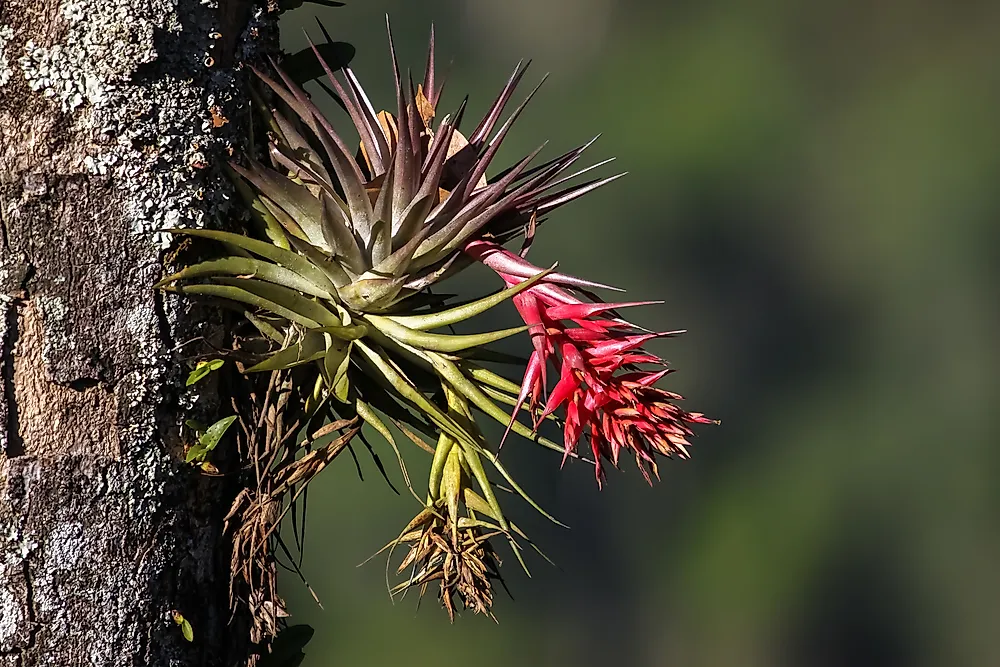What Is An Epiphyte?

Epiphytes are plants that grow on other plants and receive their nutrients and moisture from the air, water, rain and debris around them. There are also epiphyte organisms that are not plants, which are referred to as epibionts. An epiphyte takes part in the nutrient cycle and adds to the biomass and diversity of its ecosystem, just like all the other organisms. Unlike a parasite, which negatively affects the host, an epiphyte does not harm its host and grow on other crops for physical support only. Epiphytes are crucial sources of food for various species and tend to provide a diverse and vibrant habitat for all organisms in the environment, including myxomycetes, bacteria, fungi, and animals. An epiphyte plant is also known as an air plant since it does not root in the soil. There are also marine epiphytes, such as numerous aquatic algae species, which grow on other water plants. Epiphytes thrive in the tropics (bromeliads, orchids and ferns) and temperate areas (algae, lichens, mosses, and liverworts).
Types of Epiphytes
Terrestrial Epiphytes
The most widespread terrestrial epiphytes include bromeliads, orchids, and mosses. Epiphytes can be found in all principal groups in the plant-kingdom. Over 89% of all terrestrial epiphytes are angiosperms (over 24,000 species). The second biggest group of terrestrial epiphytes, which account for 10% of the species, are leptosporangiate ferns (2,800 species). In fact, more than one-third of all ferns are epiphytes. Clubmosses make up the third most prominent group of terrestrial epiphytes (190 species), followed by cycads, Gnetales, and spikemosses. A significant proportion of large epiphytes can be found in moist tropical forests, while lichens and mosses can grow in all biomes.
Epiphytes can be categorized as hemi-epiphytes or holo-epiphytes. Holo-epiphytes are plants which spend their entire lifecycle without touching the soil, such as orchids. Hemi-epiphytes do not touch the ground for half of their lifecycle, as their roots eventually reach the ground, such as the strangler fig. In Europe, most lichens and mosses thrive on trees that grow in damp regions, while polypody ferns usually grow along tree branches.
Marine Epiphytes
Marine epiphytes include all species of mollusks, crustaceans, protozoa, ascidians, bryozoans, sponges, fungi, bacteria, and algae growing on the surface of algae and seagrasses. The survival of marine epiphyte species is heavily influenced by various factors, including trophic interactions, nutrients, currents, temperature, and sunlight. The most common group of marine epiphytes is algae.











